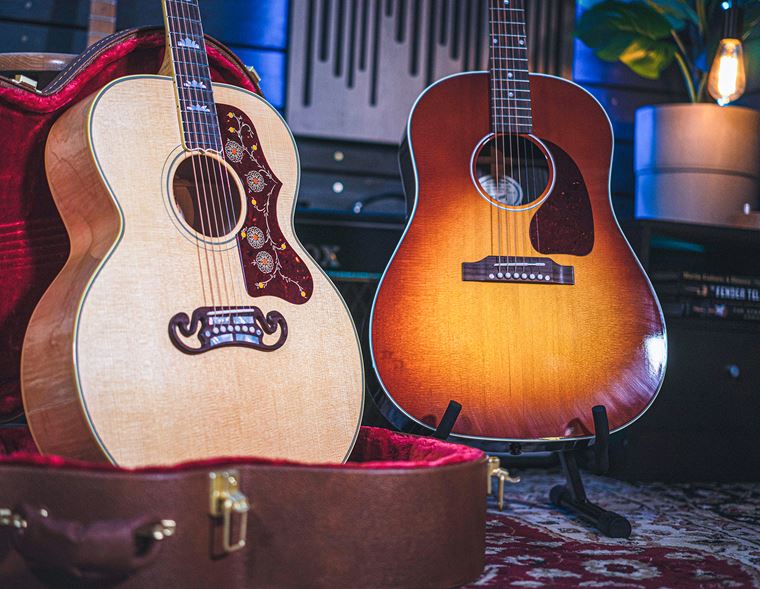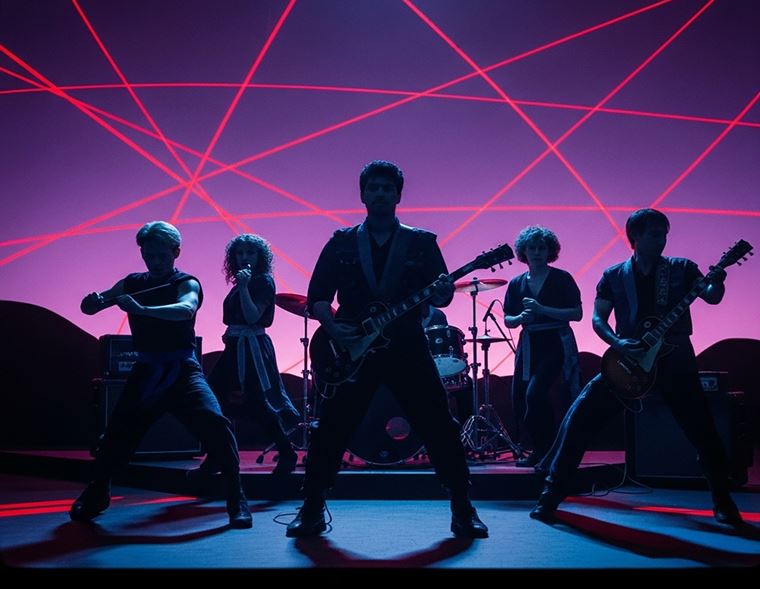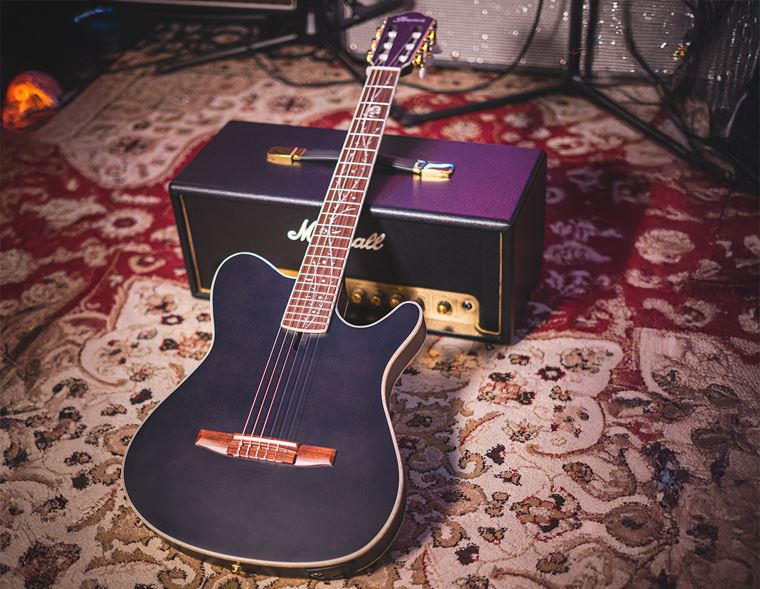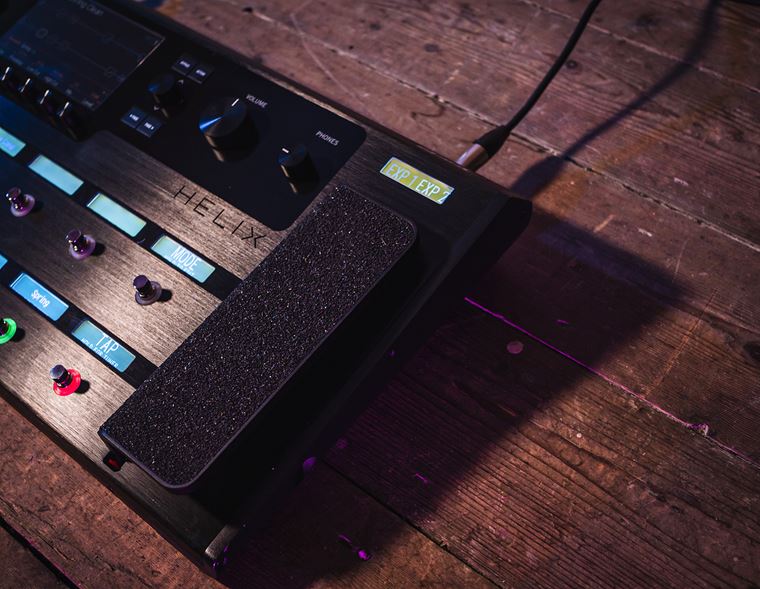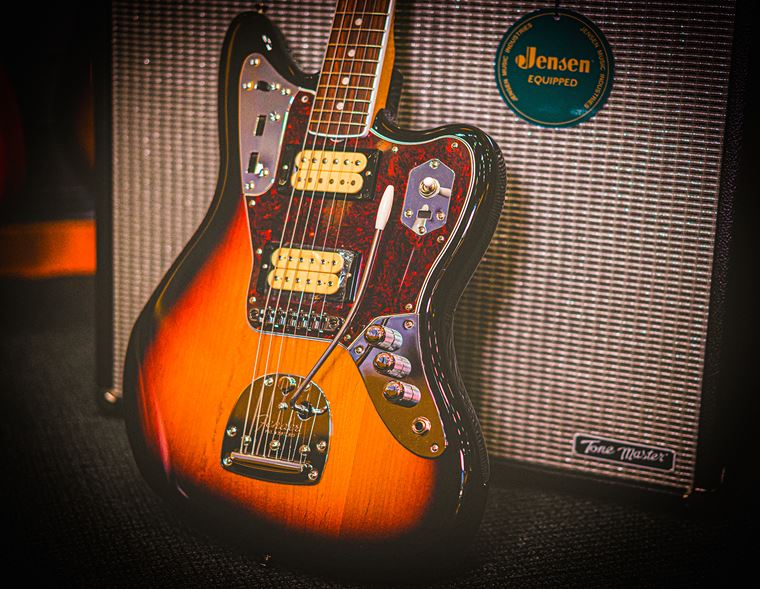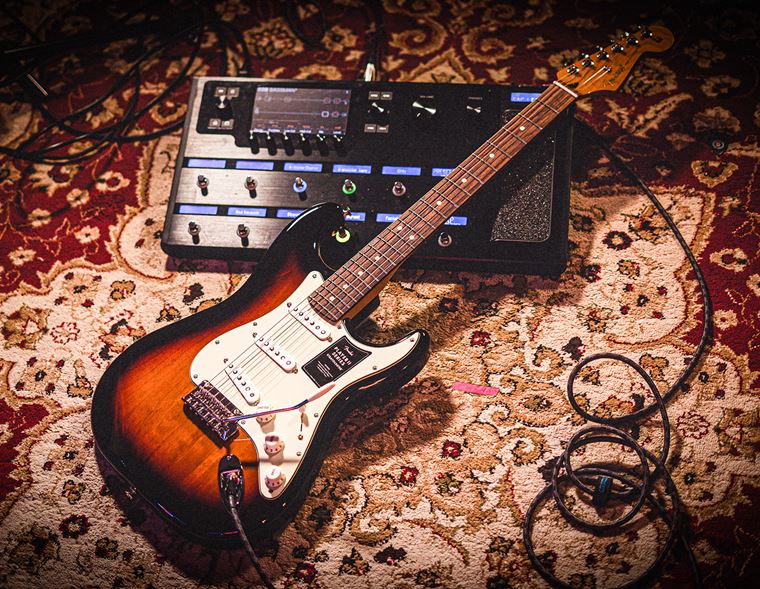The Best Produced Songs of All Time
How important is production to a song? In fact, let’s go back a little here: what even is production? Often, when we talk of production, we’re really referring to engineering: that is, the actual quality of the sounds found on any given song. Engineering is a part of the production process, though, but there’s more to production than that.
It’s not just the mix either, though again, that’s a huge part. No, production is all of these things plus the decisions made about the instrumentation, the arrangement, when things happen in a song (and when they don’t) and how all of that leads to a song’s impact.
Today, I’m going to highlight some of the most amazingly produced songs I’ve ever heard. In the process, I’ll point out the reasons for my choices, and hopefully explain by example this mysterious thing known as ‘production’.
Contents
The Beatles - Strawberry Fields Forever
Phil Collins - In the Air Tonight
Nirvana - Smells Like Teen Spirit
Led Zeppelin - Whole Lotta Love
Simon & Garfunkel - Bridge Over Troubled Water
Production Can Be a Lot of Things
Pink Floyd - Time
Let’s go to Pink Floyd first, because they are the band most associated with ‘production’ by far. Is that association deserved? Of course it is! Their records are not only excellent sounding, but they are also willfully bizarre - in arrangement and instrumentation as well as sonically and lyrically - particularly considering how titanically popular they are.
Dark Side of the Moon is the obvious contender, and yes, I am going for Time, but not because of the famous intro. Those jarring, wonderfully recorded timepieces going bananas at the beginning of the track are most impressive (if they didn’t sound like they were literally in the room with you back in the day, then your parents’ hi-fi system was rubbish), but let’s look past that and see what the song itself has to offer.
For one thing, look at the arrangement. Big long intro (massively indulgent, but also a pretty great bit of tension/release, much like album opener Breathe); a verse that’s unexpectedly funky but uses the same chords from the intro; a chorus that is hugely different (tone, pace, chords, melody, colour) that manages to further the nostalgic feeling of the lyrics; an enormous guitar solo that takes up a verse and a chorus, again changing abruptly from one part to the next. “Hanging on in quiet desperation is the English way” seems to me to be the key lyric, and the music can be seen to occupy that same space. Ironically, it’s a slow song about the passing of time that doesn’t feel like it’s taking ages. There’s even a reprise of Breathe at the end, for extra context.
Production wise, the song keeps the funky verses slightly harsher sounding with much dreamier choruses, Gilmour’s voice sounding much softer and accompanied by those same iconic backing vocalists who sing on Great Gig in the Sky. The solo is obviously the centrepiece of the song, but requires the build up of the previous three and a half minutes to achieve its full impact. It’s all about the arrangement, the recording (engineered by Alan Parsons) and the performances themselves here. Masterpiece? Obviously so.
The Beatles - Strawberry Fields Forever
How could the Fab Four not be in this list? The amount of ground covered in their short lifespan as a band is breathtaking, and the thing I admire most is how many creative risks they took.
Take this famously psychedelic song, for example, from 1967’s Magical Mystery Tour album. The arrangement is wonderfully odd, starting with a mellotron and adding elements that include brass parps and Indian Swarmandel (I had to look it up), before adding an excellent drum groove that ties everything together. Still, there are flights of gleeful madness in there anyway, circling around John Lennon’s vocal in a myriad of colours and shapes, all produced in a pre-computer studio by manipulating tape machines and basically having very creative ideas. It seems that this song caught the psychedelic scene as it emerged too, so it’s not a case of a big band ripping off a smaller scene: they were creating it.
There’s the false ending, too, before the song comes back with a measure of music that I can only liken to the Mad Hatter’s tea party. It seems pointless to make comments about the Beatles being creative geniuses, but it’s clearly the case. I also wholeheartedly admire their lack of concern about how to pull this sort of thing off live: it’s impossible!
As someone born long after the demise of The Beatles, I often wonder: did music like this document the times that were (back then) or a time that never was? You can tell me, but in terms of production, Strawberry Fields Forever is masterful and playful. What a combination.
Phil Collins - In the Air Tonight
This is one of those songs where every moment is absolute gold. It’s a perfect example of lush yet sparse production, with a focus on atmosphere above all else.
Obviously, we’re all waiting for the tension and release of that drum fill, but from the word go, this song excels: starting with a simplistic drum machine, we soon hear the (very far away) spectral thrashing of a ghostly sounding guitar, whose processing is mirrored by Collins’ lead vocal. Again, it’s subtle, but that’s hardly a ‘natural’ vocal sound, and it’s all the better for it.
The additional voice is super-effected, which only adds to the alienation of the track. Crucially, when the drums finally do come in, they only briefly dominate, before settling back into a pattern that actually doesn’t resolve the tension of the time at all. This track demonstrates the power you can achieve by having a load of great musicians audibly holding back, and not letting themselves go.
There’s more that can be said of the production (the complete absence of cymbals, for one thing), but just give it another listen with critical ears and we’ll move on.
Michael Jackson - Billie Jean
Thriller is the biggest selling album ever (current numbers are 3 bajillion records sold) and Billie Jean was the most successful single from it. It must sound good then, right?
Yeah, of course it does! Quincey Jones knows what he’s doing! So did MJ, who apparently got so distracted by the song forming in his mind that he didn’t even realise his car had caught fire! I’m not sure I believe that, but it’s a good story. Here’s what Jackson did say about the song, though:
"A musician knows hit material. Everything has to feel in place. It fulfils you and it makes you feel good. That's how I felt about 'Billie Jean'. I knew it was going to be big when I was writing it."
This is a guy who definitely recognises hit songs. But what made it such an effective production? Let me partly answer by asking another question: what’s the first thing you think of with this song? It’s the bassline, isn’t it? Notice how often that bassline changes throughout the song.
Yeah, hardly ever! The verse and the chorus use effectively the same music, with only the bridge and a little chord change halfway through the chorus breaking that solid riff. This whole song is designed to get you dancing, from the unchanging bassline to the PERFECT snare sound and the extra maracas to get your hips and shoulders going. The simple synth riff is also immediately recognisable, and your whole body just knows that you’re inevitably heading to the dancefloor, preferably with pointy little shoes on and a few ‘Hee-Hee’s on the way.
Joy Division - Atmosphere
I’m fully aware that many people reading this entry would cry folly and point towards Martin Hannett’s revolutionary, game-changing production for Joy Division’s two albums, but I believe this song beats all of that, and here's why…
Joy Division’s sound is icy and detached to begin with. Hannett’s use of synths and studio tricks is undeniably excellent, and indeed one of my favourite things about the band’s sound. However, none of their songs - in my opinion - connects emotionally as much as this one, and the production is a huge part of that. Hooky’s bass leads the song, instantly recognisable but never overpowering, and Sumner’s guitar is nowhere to be heard until much later on. Indeed, it becomes all the more effective due to its absence, replaced instead by keyboard sounds that are simultaneously mournful and hopeful.
For me, it’s actually the drums that add the most to the production. I’ve never heard a kit recorded in such a realistic manner before: you can physically feel each of Stephen Morris’ tom hits as if they are in the same room, mixed high and relatively dry compared to the rest of the song.
On top of that is a vocal by Ian Curtis that is heartbreaking in its regretful intensity, but also again, really close up in the mix, as if he’s singing in your ear. The epic synth washes, digital chimes and eventual guitar all sound much further away in a rain-soaked distance, providing the most perfectly produced backing possible for this particular song. Not a note nor a sound here is too much or too little.
Nirvana - Smells Like Teen Spirit
It’s unlikely that there are many people reading this who are unfamiliar with Nirvana’s biggest tune, so let’s move directly to what makes it interesting. For this particular song, I’ve included two different mixes here: Butch Vig’s original mix and Andy Wallace’s version, which is what made it onto the album and single releases.
From a casual listen, can you hear much in the way of differences? Granted, these things are diminished by YouTube’s compressing, and then your phone/laptop’s speakers, but I believe the vocal is louder on Wallace’s mix, and the clean guitars have more jangle. My ears would also tell me that the drums are punchier and that there’s a vague smoothness that permeates the entire track.
What do you think? Did Andy Wallace’s additional tinkering transform the song into a hit, or would it have been huge with Vig’s mix anyway? Butch Vig is obviously a world-class producer, as we’ll find out in a second, but the point of this song’s inclusion is that those minute decisions about levels and EQ can end up being the ‘sparkle’ that marks a classic, epoch-defining song from a merely great tune.
Garbage - Stupid Girl
Beginning with an impeccable sample of The Clash’s Train in Vain and then introducing a whole menu of interesting sounds as the song unfolds, Garbage’s debut single is another one of those songs where familiarity might lead you into glossing over how innovative and effective the production is.
Sounding nothing like his previous production work with Nirvana or the Smashing Pumpkins, producer/drummer (not that he’s playing on this track!) Butch Vig instead branches out into the world of trip hop and electronica for this iconic tune. Notice the layers of atmospheric soundscaping behind the song; check out how the separate guitar parts all come in and out as an orchestrated whole, and marvel at the almost industrial-style noises found later on in the song.
Above all, feel how well the song flows from one state to the next, all with a confidence that pulls the wool over your eyes: Garbage may perform live as a band but there’s no way this is a group of people in a room playing! It’s as ‘Pro Tools-ed’ as the next song on this list, but Garbage achieve that moody band feel just the same.
Can you spot the REM sample without Googling it?
Led Zeppelin - Whole Lotta Love
When you start off with one of the world’s most famous guitar riffs, you know you can lay down some serious production. Perhaps Led Zeppelin’s most overtly horny tune, Whole Lotta Love takes some bizarre sideroads during its sub-5 minute running time.
In fact, they only sit on that famous riff for about 80-idd seconds before abandoning it for a good minute and a half of what I can only summarise as ‘a mad late 60s trip’ featuring strange percussion sounds, mad whizzing tape effects and some vocal improv by Robert Plant. Producer and guitarist Jimmy Page keeps his guitar admirably quiet throughout this section, so that when his solo breaks through the weirdness around 3 minutes in, it has an awesome impact.
After that, it’s back to business as usual for the band, who allow drum emperor John Bonham to go nuts. Always a good idea! It was a bold move to insert the trippy section into what is an obvious hit song for the time, but that’s what made them Led Zeppelin, I suppose! It’s not like they were short of good tunes, but even so, the level of ‘bonkers’ on display raises an eyebrow even today, over 50 years on.
P.S. Quick tip for nailing that riff: most folk reckon they can play it correctly, but add an open ‘D’ note alongside the 5th fret D you’re already playing and you’ll hear a little bit of Page magic right there!
The Prodigy - Breathe
Instantly recognisable intro riff. Huge breakbeat and bass. Tons of punk energy. Vocals that rip through the mix with more attitude than John Lydon at his most Rotten. It can only be The Prodigy, and it’s easy to forget just how pioneering and intricate their productions are.
How many club tunes (and that’s very much what this is, no matter how ‘punk’ they’ve dressed it up) have nasty acoustic interludes? What a surprise! How many rock tunes can manage to achieve such a flow between loud and abrasive to…less loud and slightly less abrasive?
The sonics here are impeccable, as you’d expect from Liam Howlett, made more impressive for the relative lack of technology available in 1997. This was all programmed one step at a time, people: there was no Ableton Live or automation back then! There are some nice samples on here too, such as the sword ‘swipes’ from an old kung-fu movie that you can hear from around the 0.30 second mark.
Listening through the tune, it’s a real masterclass of adding in elements, removing others and maintaining a thrilling journey or sound that slams super-hard. Also, getting a tune as openly aggressive sounding as this to number 1 in the charts is proof that anything done as well as this will find its audience.
Massive Attack - Angel
Is there anything as menacing as the intro bass riff to Massive Attack’s Angel? The lead single from the groundbreaking Mezzanine album, Angel was used in Armani ad campaigns and is a staple of the band’s live set. Given that the key lyric is ‘You are my angel, come from way above to give me love’, this is a pretty sinister sounding song.
It’s also a remarkable achievement in production. Witness that bass line, for instance: it’s actually two basslines, and when you hear it, you’ll instantly know it. The intro actually takes an almost Pink Floyd amount of time, languishing in atmospheric darkness before Horace Andy’s haunting vocal enters at the 0.36 second mark. It’s a stripped back intro for sure, and the song has something of a ‘ramp’ dynamic, in that it increases continually as it develops.
Sonically, the track is already top notch (if you get all of your basses to sit in a mix like these two, you are flat-out winning), but it's the subtle-ish segueing from a dark electronic track to a moody live band performance that really impresses. Indeed, there is never really a point where the song is one or another; both elements are there from beginning to end, but it’s how the balance swings that seals the deal here. It’s a very ‘narrative’ thing to do - the song goes somewhere - and whilst lots of artists try this sort of thing, few achieve it with such artistry or panache. Here’s Massive Attack’s co-producer and unofficial fourth member Neil Davidge’s take on it:
“I think ‘Angel’ itself is a track that really shows the progression that the album went through creatively – starting with sequences and samples, then chucking those out, then reprogramming most of the sounds, then bringing in a live band to jam over the top of it.”
A final point: the decision to begin with a fade in. Fade-outs are often seen as a cheap way to end an unfinished song, but a fade-in is altogether rarer and more confident. It implies that that menacing bassline has already been going for ages - forever, perhaps - and we’re only now being allowed to hear it.
In fact, a final, final point: this track was created in 1998. It hasn’t dated a day, sounding as fresh as anything released this week. Excellent work!
Simon & Garfunkel - Bridge Over Troubled Water
Just then, we spoke about Massive Attack’s song starting with relatively little and then adding and adding to a dramatic crescendo. This massively famous song by New York troubadours Simon & Garfunkel must be the most famous example of this.
Bridge Over Troubled Water begins with only a piano, before Garfnukel’s vocal takes the lead. Paul Simon’s famous harmony voice doesn’t even show up until verse three. By this point, the track has built a little steam but is still more or less a low key thing. The message of hope and solidarity is sung with conviction, but there's nothing much to separate it from many other tunes like it.
That third verse, though! The ‘Wall of Sound’ style production would make you think this was a Phil Spector tune, but it is produced by Roy Halee, along with Art and Paul themselves. This is significant, because the huge sounding third verse was actually Halee’s idea, who felt the song needed a ‘bigger’ ending. That in itself is a great example of production, so is the fact that both Simon & Garfunkel were unsure of doing so but complied. Good decisions!
Another great production fact is that Paul Simon shifted the instrument (he wrote it on guitar but moved it to piano) and indeed the key to better suit Art’s voice. For his part, Garfunkel liked Paul Simon’s falsetto vocals on his demo and suggested that be how they approach the song. Garfunkel lost that one, and the song is massively powerful because of his delicate performance.
AC/DC - Back In Black
This one isn’t too complicated. Back in Black sounds absolutely brilliant, and that’s because producer Mutt Lange knew what the band’s strengths were and manifestly played to them.
It’s almost a blueprint for how to do rock: get a nice sounding room, capture that in the drum sound, and go for a feel that’s as live as possible without taking any shortcuts.
Notice how clean the guitars sound - this is not high gain territory! They also keep out of each other's way, with plenty of sonic space available for the inevitable solo. Best of all, there’s a confidence in the songwriting that means the band don’t need any tricks to impress the listener: it’s meat and potatoes rock for sure, but the best tasting meat and potatoes you’ll find anywhere!
ABBA - Dancing Queen
It’s hopefully accepted wisdom these days that ABBA were an absolute force when it comes to crafting perfect pop. Dancing Queen is their definitive tune in my opinion, and there are some pretty nice production insights to be taken from it.
First thing: the groove is relentless. The chords change all over the place but the drums stick very largely to the disco beat they begin on. Makes sense, given the title!
Second thing: the amount of ‘call and response’ between the vocals and the instruments makes every part of the song singable, not just the words. Think about it: sing ‘Friday night and the lights are low’ and then what do you do? You hum the synth part don’t you? Pure melody. Another example is the little piano fill in the chorus right after “only seventeen” and the backing vocal melody after “dig it, the Dancing Queen”, that apes the intro. It’s all interwoven brilliantly.
Two less obvious things that make this song awesome: subtle pitching and subject matter. Firstly the pitching. ABBA’s now famous trick was to finish mixing their song and then raise the pitch of the entire song by a tiny amount - only a few cents’ worth - so that their songs would somehow stand out on the radio. Talk about genius?
As for the subject matter, I’d still call this a production thing (particularly since the song’s writers were also the producers), and it's the simple shift from what you think the tune’s about to what’s actually being said in the song. The song is sung from the perspective of somebody who is not the Dancing Queen. It’s some other sad soul watching this incredible person from a distance and making bittersweet remarks about how effortless the Dancing Queen’s life is perceived to be. Knowing this turns the song entirely on its head, and a superficially carefree, celebratory track instantly becomes something far more affecting and tragic. Does it improve the tune? Immeasurably so, I’d say.
Production Can Be a Lot of Things
Well, there’s my list of thirteen songs, whittled down from a shortlist of about forty five. What do you think of my choices? Did I miss loads of classics? Of course I did! But these songs all demonstrate what I set out to establish, which is that ‘production’ is a pretty mercurial term that actually has relatively little to do with how a record sounds. It is that, of course, but it’s the layers of problems and decisions that really mark a great production. It’s what gets put in and when, and what is left out or removed. It’s when a song needs to change, and when it needs to remain how it is. It’s all of that and loads more.
If you’re a producer, I hope this blog has resonated with you today. If you’ve never thought much about what a producer does, I hope to have informed you a little. As you’ve read, no two gigs are the same when it comes to production, and great production can mean a million different things, but with one end goal: the creation of an exceptional song. After all, what’s more important than that?


